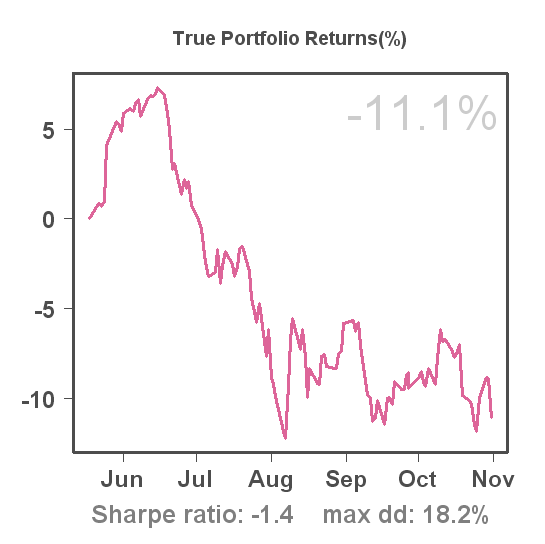Why are these distributions useful?
I ended my previous post with the words "Why is all this useful?", and today I'll try to answer this question.
Remember, I started discussing these distributions because Weekend Trader recently closed two trades with very large returns. Together with a trade with even larger returns (initiated in 2006) they have been responsible for almost half of the entire return (percentage-wise) of the system since its inception.
If you believe that these 3 trades are outliers, luck, the result of randomness etc, it would not make much sense to count on more of those for the future. After all, this is not about gambling but about trading. In that line of thinking, the performance of the system should be judged average at best.
However, if you believe these trades are an inherent part of the system's mechanics (perhaps due to a "let profits run" approach), the system (or vendor) should receive full credit for them, and performance might be judged good or even excellent.
The distributions we fitted can help to get more confidence in either the first ("luck") hypothesis or the second ("credibility") hypothesis, and allow us to determine how likely it is we can expect more of those big home-hitters in the future.
At first sight one might be tempted to conclude that since 3 out of 72 trades each resulted in increases on capital of more than 11%, the probability of this happening is 3/72 or 4.2%. I.e. we would expect every one out of 24 trades to increase equity by more than 11%. The problem with such an estimate is that it is not very precise: By the same calculation, the chance of observing a trade that increases equity by 10% (instead of 11%) is also 3/72, simply because none of the 72 trades so far showed a return between 10 and 11 percent. Similarly, the chance of observing a trade that increases equity with more than 12% (instead of 11%) falls quite abruptly to 1/72. Finally, if we would want to know the chance of a trade increasing equity by more than 17%, it would be zero, as we haven't seen those trades (yet)--but we all know that the chance is unlikely to be zero. Perhaps very small, but unlikely to be exactly zero.
Using distributions allow us to obtain more precise (and smoother) estimates. After fitting a distribution, we can get a precise estimate for whatever return percentage we are interested in, 10.4%, 10.8%, 200%, -30%, anything. It comes at a cost however: If we do a bad job at fitting a distribution, the probability estimate it will give us might be badly off. How badly? Consider the normal (Gaussian) distribution shown in red in the previous two graphs. Clearly it doesn't fit the histogram very well. According to this distribution, the chance of observing a trade that increases equity by more than 11% is only 0.27%! Compare this to the observed probability of 4.2%, and you see that this distribution underestimates the probability by a factor 15!
What do the other 3 fitted distributions have to say about the chance of observing a trade that increases equity by more than 11%?
- Cauchy: 3.7% (or 1 in 27 trades)
- Stable: 1.9% (or 1 in 53 trades)
- Generalized hyperbolic: 2% (or 1 in 48 trades)
These estimates look quite a bit more realistic than the Normal!
What about a trade that would increase equity by more than 20% (note: such a trade hasn't happened yet, so without fitting these distributions we wouldn't have a clue).
- Normal: 5.16e-08 (or 1 in 19,385,163 trades)
- Cauchy: 2% (or 1 in 51 trades)
- Stable: 0.7% (or 1 in 138 trades)
- Generalized hyperbolic: 0.5% (or 1 in 211 trades)
If we believe estimates from the last 3 distributions, such an event would not be that rare (the Normal estimate demonstrates once more how bad it is for fitting heavy-tailed distributions).
Based on these results, I have a hard time believing that these outlier trades are pure luck. I'm leaning more towards the second hypothesis: they're part of the characteristics of the system and should be treated as such. Obviously this doesn't mean it makes it a lot more comfortable to trade the system. It can be quite nerve-wracking to wait for the next big home-hitter... But analyses like these should give some confidence that it's worth waiting.
As you probably noticed, it can make quite a difference which distribution to choose... In subsequent posts I'll discuss how to measure and test how well a particular distribution fits the data, which might make such a choice a little easier.


No comments:
Post a Comment